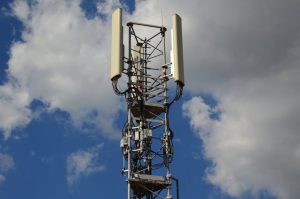Exploring the Role of LEO Satellites in Global Internet Accessibility

Global Internet access remains a critical challenge in the modern era. Despite advancements in technology, bridging the digital divide continues to be hindered by physical obstacles, affordability issues, and lack of user education. For those in remote or disaster-prone areas, traditional infrastructure has often proven ineffective. However, Low-Earth Orbiting (LEO) satellite networks, such as Starlink, have emerged as a promising solution by circumventing terrestrial barriers and directly connecting users through space-based data routing systems. With new players like Project Kuiper and IRIS^2 also entering the arena, the potential for LEO networks to reduce connectivity gaps is immense, but questions about their performance standards and government subsidies remain hotly debated.
Assessing Performance Standards for LEO Networks

Pexels
Analyzing the effectiveness of LEO satellite networks highlights some intriguing findings, particularly around Starlink, currently the most widely deployed provider. Using data from Google’s M-Lab speed test metrics, researchers evaluated Starlink’s throughput in the US, Europe, and Australia. While many samples achieved peak download speeds above the commonly suggested benchmark of 100 Mbps, only a fraction consistently met average performance standards—24.7% in the US, 13.6% in the EU, and 42.2% in Australia. This discrepancy underscores the volatile nature of LEO networks, raising concerns about whether current broadband quality metrics, designed for stable fiber-based connectivity, are suitable for these dynamic new technologies. Policymakers may need to reframe existing standards to better accommodate the strengths and limitations of LEO satellites.
Equity in Connectivity: A Closer Look at Starlink

Pexels
One of the most intriguing aspects of LEO networks like Starlink is their potential to challenge the historical bias in Internet infrastructure favoring higher-income regions. Historically, infrastructure rollouts have disproportionately benefited wealthier areas, leaving underserved communities behind. However, new data reveals Starlink’s equitable performance across income brackets. In a study that compared speed test results from the top and bottom 10% of US counties by median income, Starlink’s median throughput showed minimal disparity, and in some cases, it even performed better in lower-income regions. This phenomenon, termed the “neighbor effect,” suggests that Starlink’s larger service radius allows rural or underserved users to gain benefits from infrastructure investments in nearby affluent areas, further supporting its value in bridging the digital divide.
Policy Implications and Future Developments

Pexels
The advent of LEO satellite networks brings both opportunities and challenges for global Internet governance. With nations like Australia, the US, and Europe considering their subsidy policies for broadband initiatives, it’s crucial to address how well LEO networks align with long-term policy goals. For example, performance metrics for broadband subsidies are inherently more suited to fixed-line connections. As satellite networks mature and evolve, international regulatory frameworks must also adapt to factor in the nature of satellite-based connectivity. LEO satellites also promise advancements in accessibility, as seen in their ability to reach marginalized communities effectively, but they introduce layers of complexity when it comes to oversight, competition, and standardization.
As Starlink continues to refine its technology and as new players like Project Kuiper and IRIS^2 deploy their networks, the low-Earth orbit space race is poised to reshape the connectivity landscape. For researchers, policymakers, and the broader public, this represents an exciting period of innovation and change, where refined broadband standards and inclusive policies could accelerate global Internet access. Continued empirical analysis, such as that conducted by Carnegie Mellon University PhD student Isabel Suizo, will be essential to shaping a future where technology meets the diverse needs of underserved populations.



